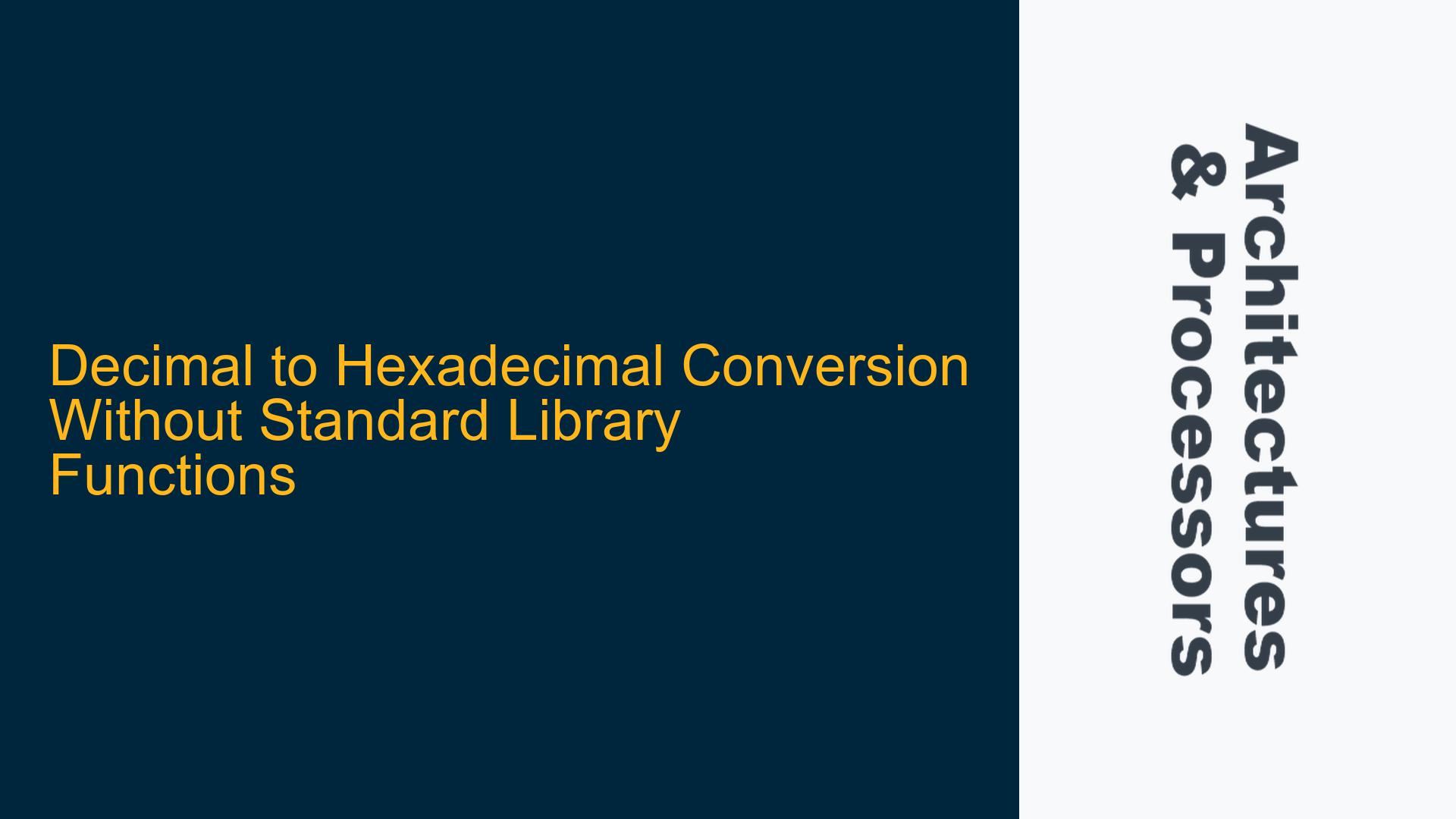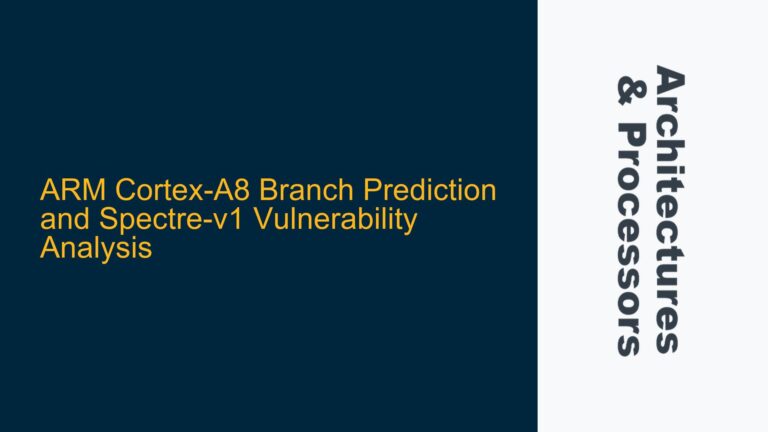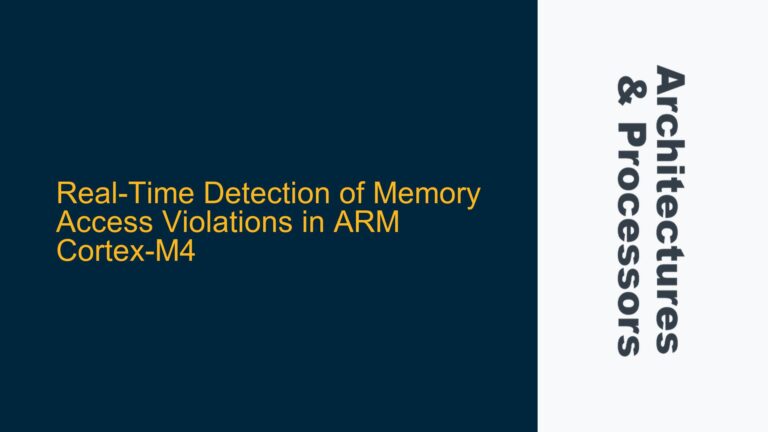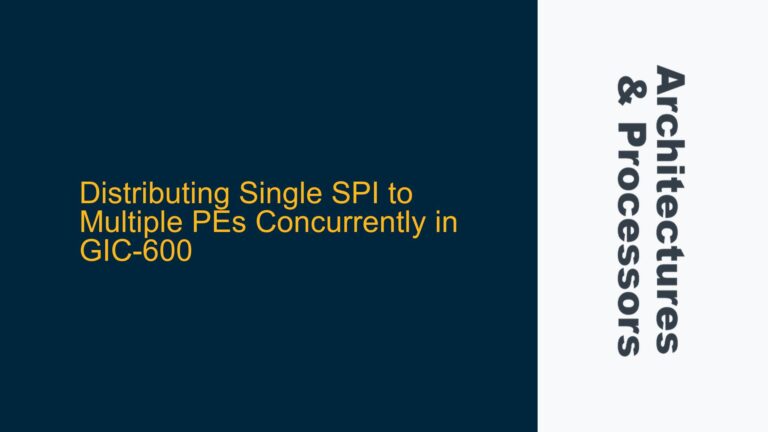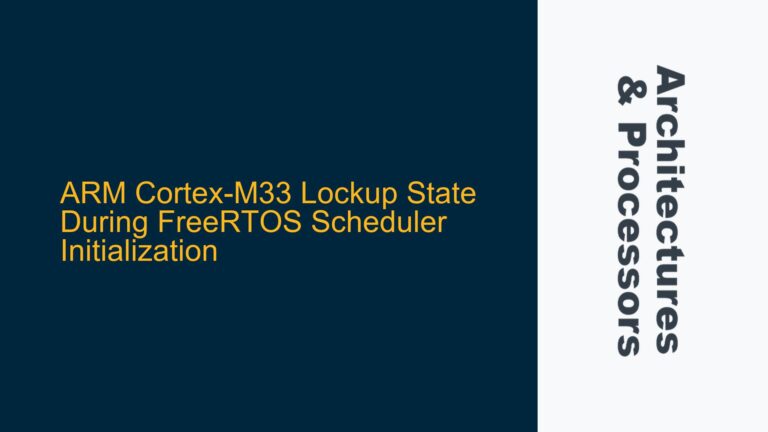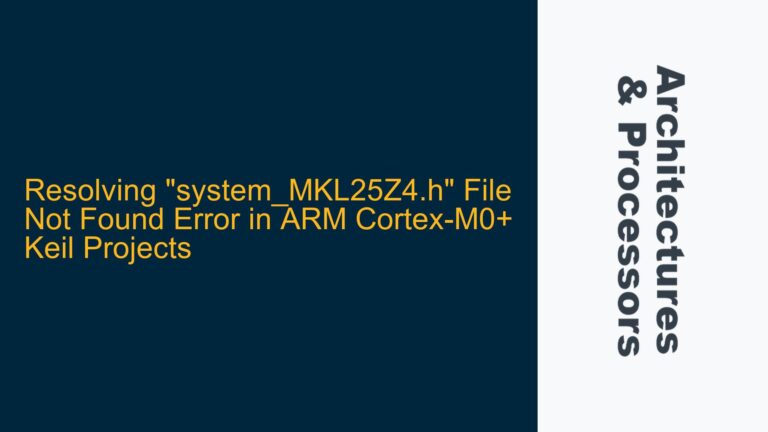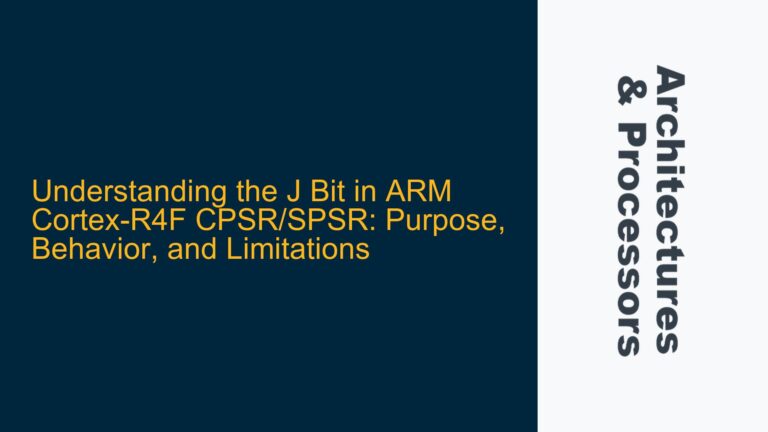ARM Cortex-M4 Decimal to Hexadecimal Conversion Challenges
The process of converting decimal unsigned integers to hexadecimal unsigned integers without relying on standard library functions such as printf or strol presents a unique set of challenges, particularly in embedded systems where resource constraints and performance optimization are critical. This issue is especially relevant in ARM Cortex-M4 based systems, where efficient data handling and conversion are essential for real-time applications. The core of the problem lies in implementing these conversions manually, ensuring that the resulting code is both efficient and compliant with the ARM architecture’s stringent requirements.
The ARM Cortex-M4 processor, known for its efficiency in digital signal processing and real-time control applications, often requires developers to handle data conversions at a low level. This is due to the need to minimize overhead and ensure that the system can meet real-time deadlines. The absence of standard library functions means that developers must implement their own conversion algorithms, which can be error-prone and inefficient if not done correctly.
The conversion from a decimal unsigned integer to a hexadecimal unsigned integer involves understanding the underlying binary representation of the data. In the ARM architecture, data is typically stored in 32-bit registers, and the conversion process must account for this. The challenge is to manipulate the binary data directly, extracting the necessary bits and converting them into the appropriate hexadecimal format.
Memory Representation and Bit Manipulation Techniques
One of the primary causes of difficulties in implementing decimal to hexadecimal conversion without standard library functions is the complexity of memory representation and bit manipulation. In the ARM Cortex-M4 architecture, data is stored in little-endian format, which means that the least significant byte is stored at the lowest memory address. This can complicate the conversion process, as developers must ensure that the data is correctly interpreted and manipulated.
The conversion process typically involves several steps. First, the decimal unsigned integer must be converted to its binary equivalent. This binary representation is then grouped into sets of four bits, each representing a single hexadecimal digit. The challenge here is to ensure that the binary data is correctly aligned and that the grouping is done accurately. Any misalignment or incorrect grouping can lead to erroneous hexadecimal output.
Another potential cause of issues is the handling of leading zeros. In hexadecimal representation, leading zeros are often omitted, but in some cases, they may need to be preserved. This requires careful handling of the binary data, ensuring that the correct number of digits is always produced. Additionally, the conversion process must account for the possibility of negative numbers, even though the input is specified as an unsigned integer. This is because the binary representation of a large unsigned integer can be misinterpreted as a negative number if not handled correctly.
Implementing Efficient Conversion Algorithms and Debugging Techniques
To address the challenges of decimal to hexadecimal conversion without standard library functions, developers can implement efficient conversion algorithms that leverage the ARM Cortex-M4’s capabilities. One approach is to use bitwise operations to extract and manipulate the necessary bits directly. This method is highly efficient and minimizes the overhead associated with more complex algorithms.
The first step in implementing an efficient conversion algorithm is to isolate the individual bits of the decimal unsigned integer. This can be done using bitwise AND operations with appropriate masks. For example, to extract the least significant four bits, the integer can be ANDed with the mask 0xF. The result is then shifted right by four bits, and the process is repeated until all bits have been processed.
Once the individual bits have been extracted, they can be converted to their corresponding hexadecimal digits. This can be done using a lookup table that maps each 4-bit binary value to its hexadecimal equivalent. The lookup table approach is highly efficient, as it avoids the need for complex conditional logic and ensures that the conversion is performed in constant time.
Another important consideration is the handling of leading zeros. To ensure that the correct number of hexadecimal digits is always produced, the conversion algorithm can be designed to count the number of leading zeros in the binary representation and adjust the output accordingly. This can be done using the ARM Cortex-M4’s count leading zeros (CLZ) instruction, which efficiently counts the number of leading zeros in a 32-bit register.
Debugging the conversion algorithm is also a critical step in ensuring its correctness. One common issue is the misinterpretation of the binary data due to incorrect bit manipulation. To address this, developers can use simulation tools to step through the conversion process and verify that the binary data is being correctly interpreted and manipulated at each step. Additionally, the use of assertions can help to catch errors early in the development process, ensuring that the algorithm behaves as expected under all conditions.
In conclusion, the conversion of decimal unsigned integers to hexadecimal unsigned integers without standard library functions is a complex but manageable task in ARM Cortex-M4 based systems. By understanding the underlying memory representation and leveraging efficient bit manipulation techniques, developers can implement robust and efficient conversion algorithms. Careful debugging and validation are essential to ensure that the algorithm behaves correctly under all conditions, providing accurate and reliable hexadecimal output.
